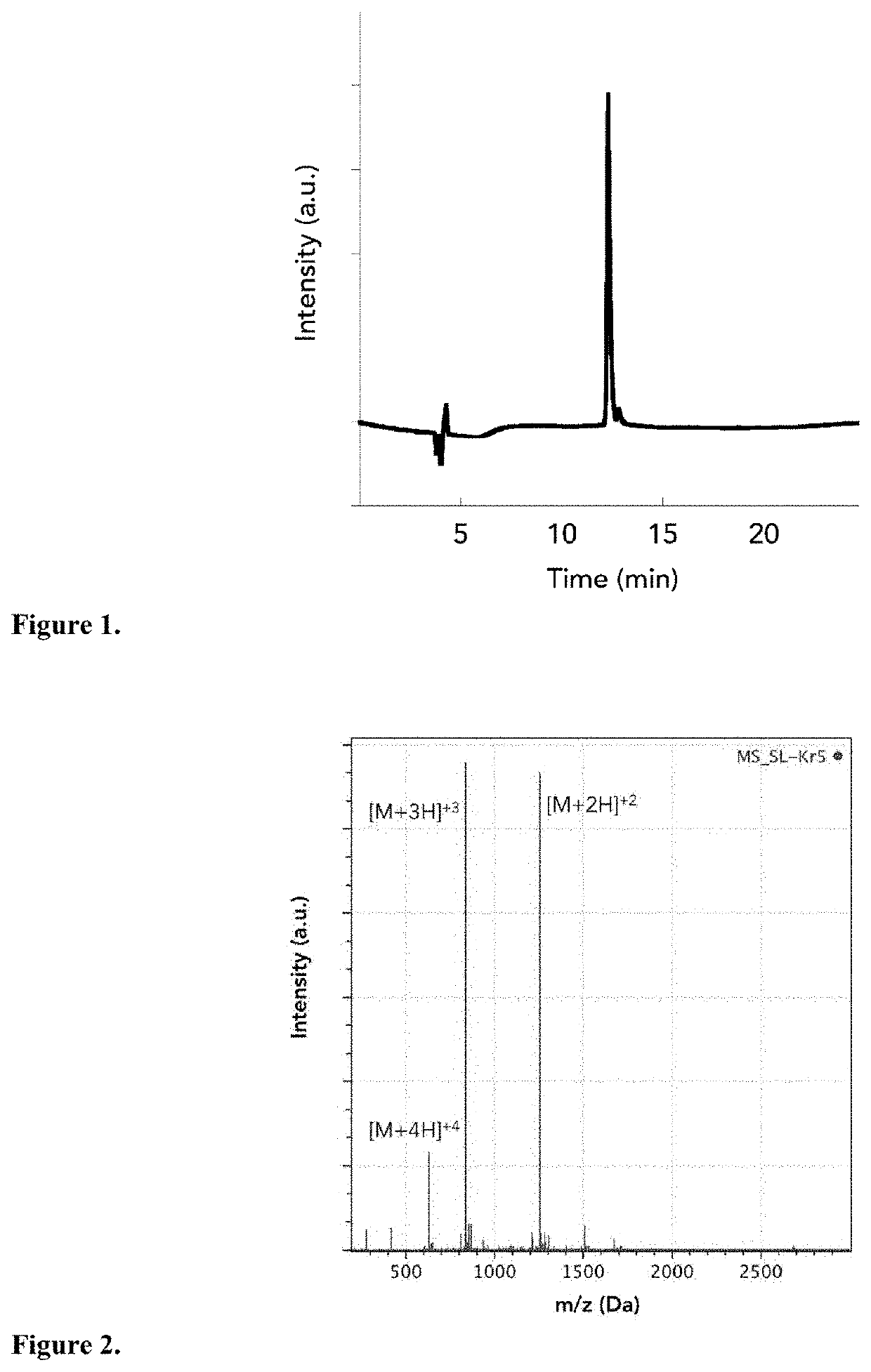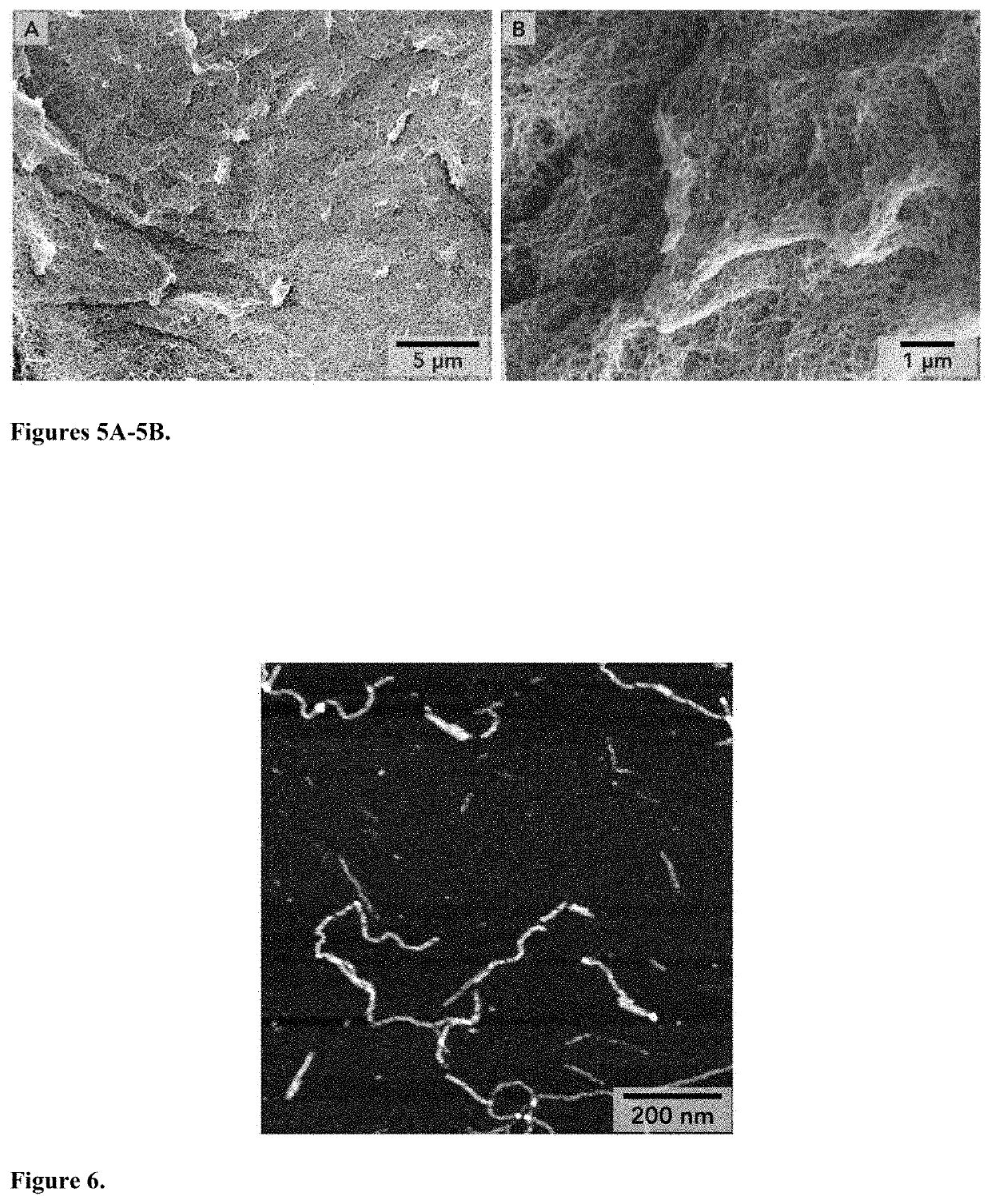Protein Hydrogels For Treatment Of Neovascular Disease
a neovascular disease and hydrogel technology, applied in the direction of peptide/protein ingredients, pharmaceutical delivery mechanisms, aerosol delivery, etc., can solve the problems of insufficient patient compliance and cost-effectiveness of treatments, lack of novel, minimally invasive and effective therapies in the market, and swelling of blood vessels, etc., to reduce vascular leakage, reduce vascular leakage, and increase the effect of vascular respons
- Summary
- Abstract
- Description
- Claims
- Application Information
AI Technical Summary
Benefits of technology
Problems solved by technology
Method used
Image
Examples
example 1
[0053]Peptide Synthesis and Purification: SL-Kr5 was synthesized by solid-phase peptide synthesis with acetyl N-terminal and amide C-terminal protective groups, using previously known methods. The peptide was dissolved in DI water and purified by HPLC (FIG. 1). Next, the peptide solution was dialyzed against DI water in 2 kDa molecular weight cut-off dialysis tubing. The peptide was then identified by ESI mass spectrometry (FIG. 2). The peptide was stored in a lyophilized form.
[0054]Peptide Characterization: CD, SEM, AFM, FTIR, and rheology methods were performed under standard methodology. Circular dichroism was performed using an Olis Rapid Scanning Monochromator to measure the ellipticity of a 0.002% (w / v) peptide solution from 190 nm to 240 nm in a 1 cm cuvette. The ellipticity was then converted to molar residual ellipticity, [θ], according to the following known formula:
[θ]=θ×m10×c×l×n
[0055]where θ is ellipticity, m is the molecular weight of the peptide, c...
PUM
| Property | Measurement | Unit |
|---|---|---|
| pH | aaaaa | aaaaa |
| thick | aaaaa | aaaaa |
| thick | aaaaa | aaaaa |
Abstract
Description
Claims
Application Information
 Login to View More
Login to View More - R&D
- Intellectual Property
- Life Sciences
- Materials
- Tech Scout
- Unparalleled Data Quality
- Higher Quality Content
- 60% Fewer Hallucinations
Browse by: Latest US Patents, China's latest patents, Technical Efficacy Thesaurus, Application Domain, Technology Topic, Popular Technical Reports.
© 2025 PatSnap. All rights reserved.Legal|Privacy policy|Modern Slavery Act Transparency Statement|Sitemap|About US| Contact US: help@patsnap.com



